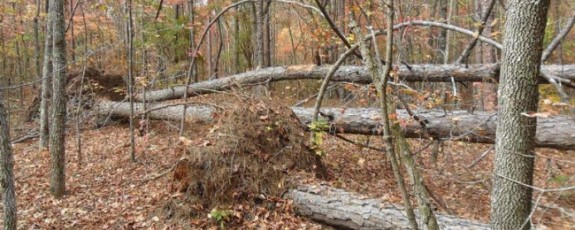Small scale disturbance caused by high winds are a common driver of change and successional dynamics in northeastern forests. Forest gaps created by canopy openings allow for regeneration of flora and habitat diversity for fauna. However, changes in the frequency, extent and severity of high wind events can alter sensitive habitats, species composition and invasion by non-native plants. Climate projections indicate that high wind events may become more common across the region.1 2 Based on 20 years of data from the NOAA global historical climatology network daily summaries (GHCND) dataset we calculated the number of high wind days (winds exceeded 55mph (48kts) for at least 5 seconds) at 73 stations across the region. This threshold was selected based on wind speeds that typically cause forest damage as reported in the Beaufort scale, the Enhanced Fujita Scale and the Saffir-Simpson Hurricane scale.

Long-term trends across the region indicate that the average number of high wind events at any given station is stable.
However, the total number of high wind events reported across the region, as well as the number of stations reporting at least one high wind event is increasing. This indicates that high wind events are increasing in some, but not all, locations.Interestingly, the both the average maximum wind speed and the number of extreme high wind events (>95 percentile) has decreased significantly, indicating that while high wind events are becoming more widespread and frequent, extreme wind events are not.
| Data Program | Years | Org | Data Products |
|---|